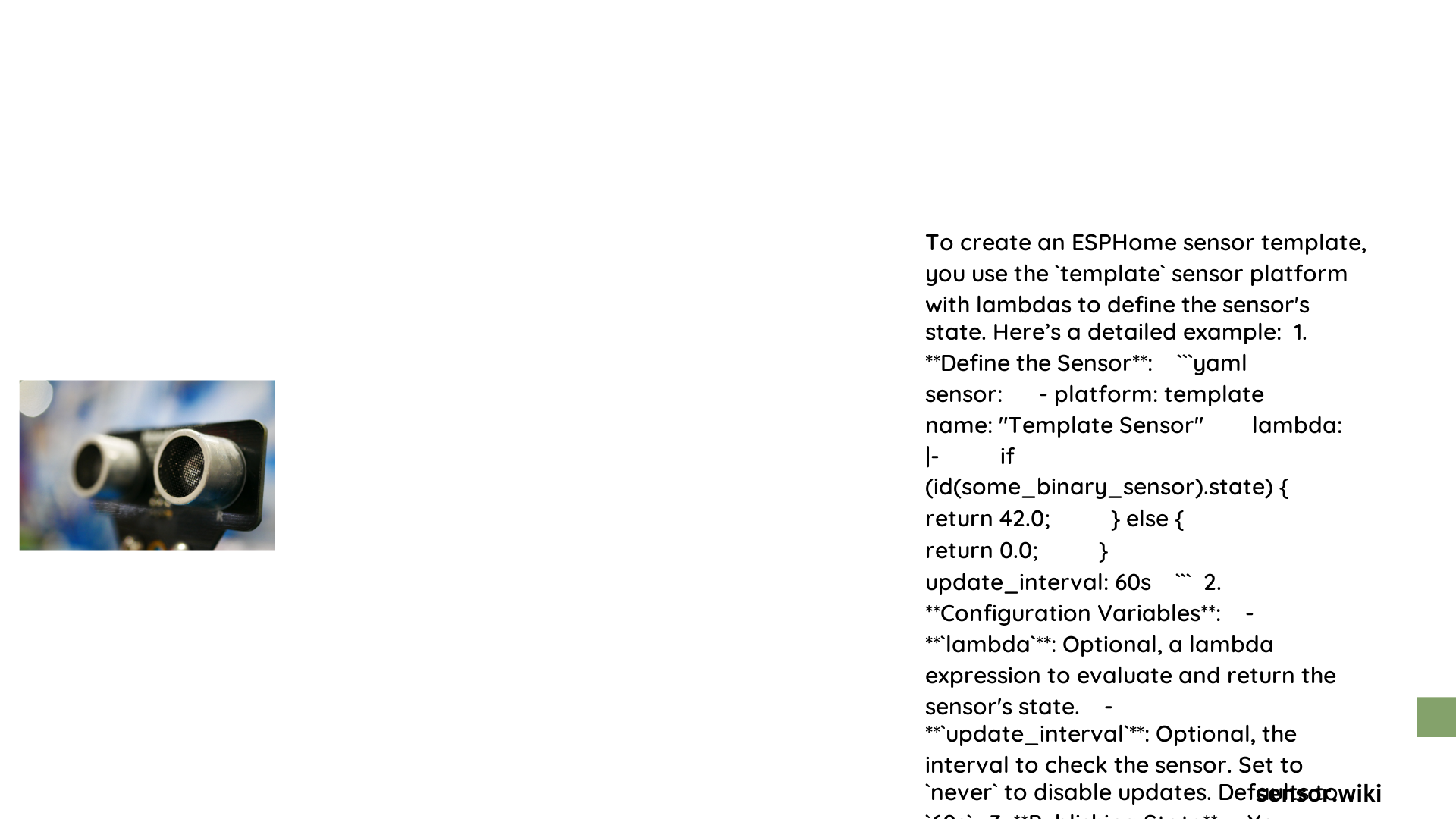ESPHome sensor templates provide developers and hobbyists with a powerful mechanism to create custom sensor configurations using flexible lambda functions and advanced processing techniques. These templates enable dynamic sensor value generation, complex data transformations, and seamless integration with various hardware platforms, allowing precise control over sensor behavior and data representation in home automation and IoT projects.
What is an ESPHome Sensor Template?
An ESPHome sensor template is a configuration method that allows users to define custom sensors with dynamic value generation and advanced processing capabilities. Unlike traditional sensor platforms, templates provide maximum flexibility in sensor data manipulation and computation.
Key Characteristics of ESPHome Sensor Templates
| Feature | Description | Use Case |
|---|---|---|
| Dynamic Value Generation | Uses lambda functions for real-time computation | Complex sensor calculations |
| Flexible Configuration | Supports multiple optional parameters | Customized sensor behavior |
| Data Processing | Implements filters and transformations | Signal smoothing and calibration |
How to Define a Basic ESPHome Sensor Template?

Mandatory Configuration Elements
- Platform Specification
- Must be set to
template -
Indicates the use of template sensor platform
-
Identifier Requirements
- Requires either
idorname idused for code generationnameprovides human-readable sensor identification
Example Basic Template
sensor:
- platform: template
name: "Custom Temperature Sensor"
lambda: |-
return id(temperature_source).state;
unit_of_measurement: "°C"
What Advanced Configurations Can Be Implemented?
Lambda Function Capabilities
- Perform mathematical calculations
- Implement conditional logic
- Reference multiple sensor states
- Generate complex computational results
Filter Implementation Options
- Calibration Filters
- Linear calibration
- Least squares method
-
Custom scaling
-
Moving Average Filters
- Sliding window
- Exponential smoothing
- Custom window sizes
How to Handle Complex Sensor Scenarios?
Multi-Sensor Interaction Example
sensor:
- platform: template
name: "Derived Humidity Index"
lambda: |-
float temperature = id(room_temperature).state;
float humidity = id(room_humidity).state;
return (temperature * humidity) / 100.0;
unit_of_measurement: "%"
Best Practices for ESPHome Sensor Templates
Optimization Strategies
- Use precise
update_interval - Implement appropriate filter configurations
- Minimize computational complexity
- Handle potential
NaNscenarios
Common Pitfalls to Avoid
- Overcomplicating lambda functions
- Neglecting error handling
- Ignoring performance implications
- Failing to validate input sources
Performance Considerations
- Keep lambda functions lightweight
- Use efficient computational methods
- Avoid unnecessary complex calculations
- Implement proper error checking
Debugging and Troubleshooting
Recommended Debugging Techniques
- Enable verbose logging
- Use
accuracy_decimalsfor precise output - Implement comprehensive error handling
- Validate sensor source states
When to Use Sensor Templates?
Ideal Use Cases
- Custom sensor calculations
- Derived sensor values
- Complex data transformations
- Multi-sensor interactions
- Advanced filtering requirements
Conclusion
ESPHome sensor templates represent a powerful configuration approach for creating intelligent, flexible sensor implementations in IoT and home automation projects.
